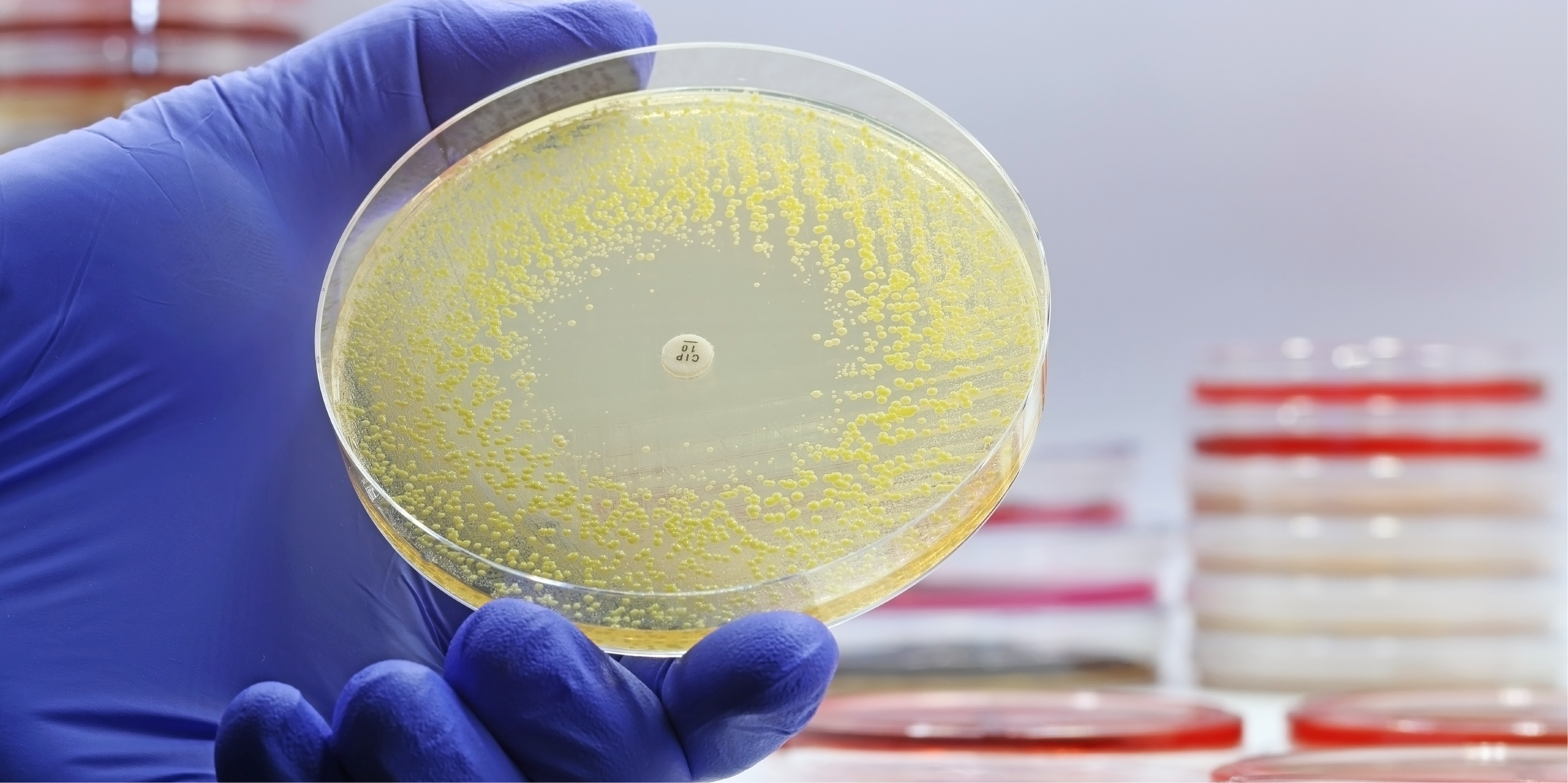Content on this page:
Content:
Laboratory Tests and Ancillaries
The following tests may be done to serve as adjuncts in diagnosing pneumonia:
- Pulse oximetry: Hypoxemia may be present in patients who do not have obvious signs of pneumonia
- Arterial blood gas: Should be done if the oxygen saturation (SaO₂) is <92%
- Complete blood count: WBC of >15 x 10⁹/L strongly suggests bacterial etiology and a WBC of >20 x 10⁹/L or <4 x 10⁹/L is associated with increased mortality
- Blood chemistry: Urea, electrolytes, and liver function tests (LFTs) should be requested to determine disease severity and identify associated liver or kidney disease
- C-reactive protein (CRP) and procalcitonin may be obtained for the diagnosis and assessment of response to therapy
- Procalcitonin may be used to guide the initiation and duration of antibiotic treatment
- Non-critically ill patients with procalcitonin level of <0.25 μg/L is suggestive of bacterial infection and may not benefit from antibiotic therapy
- Critically ill patients with procalcitonin level of <0.50 μg/L indicates a low probability of bacterial infection; however, retesting after 6-24 hours may be used to deescalate or discontinue empiric antibiotic therapy
Microbial
Etiology Testing
Tests to determine microbial etiology in patients with
low-risk community-acquired pneumonia are optional. However, the rationale behind determining the
causative organism in some patients with community-acquired pneumonia is that
the results of the diagnostic testing are anticipated to result in a change in the
patient’s antibiotic regimen, especially if unusual pathogens are suspected. It
is also important in cases of public health interest such as when severe acute
respiratory syndrome (SARS) virus or SARS coronavirus 2 (SARS-CoV-2/COVID-19)
are being suspected. It also allows antibiotic de-escalation and helps narrow
the treatment regimen to prevent the emergence of resistance.
Blood
Culture
Blood culture is considered as the gold standard in
the etiologic diagnosis of pneumonia. Although it has low sensitivity, a
positive blood culture (at least two sets of pretreatment blood cultures) is
specific. Pretreatment blood culture is recommended for patients with severe community-acquired
pneumonia, currently taking empiric agents for methicillin-resistant Staphylococcus
aureus (MRSA) or Pseudomonas aeruginosa, previously infected with MRSA
or Pseudomonas aeruginosa especially those with a prior lung
infection, or with history of hospitalization given parenteral antibiotics
during admission or within the last 90 days. High-risk community-acquired
pneumonia is the strongest indication for blood cultures because of the higher
yield, the greater possibility of the presence of pathogens not covered by the
usual empirical antibiotic therapy, and the increased potential to affect
antibiotic therapy.
Sputum
or Tracheal Aspirate Gram Stain and Culture
Pretreatment Gram stain and
blood culture of lower respiratory tract aspirate are recommended for all patients with severe community-acquired
pneumonia, especially if intubated, patients with moderate community-acquired
pneumonia currently being treated for MRSA or
Pseudomonas aeruginosa, with a history of MRSA or Pseudomonas
aeruginosa infection especially those with a prior lung infection,
or those with history of hospitalization given
parenteral antibiotics during admission or within the last 90 days.
For intubated patients, an endotracheal aspirate
sample or a bronchoalveolar lavage from bronchoscopy should be obtained. Gram
stain is quick and inexpensive, can assess the quality of samples, helps interpret
culture results, and may give an early indication of possible etiology. Culture
for Legionella sp on specific media should be requested in areas where Legionella
sp is endemic and in patients with recent travel.

Serology
Urine antigen test or nucleic
acid amplification test for Legionella sp should only be done if
epidemiologically relevant (eg Legionella outbreak), there is history of
recent travel, and in adults with severe community-acquired pneumonia. Additional
serological tests may be performed for atypical pathogens (eg Mycoplasma
pneumoniae, Chlamydia sp, Coxiella burnetii, influenza virus,
adenovirus, respiratory syncytial virus [RSV], Legionella pneumophila). A single serum sample taken within 7 days of the onset of
symptoms is of limited value.
Rapid
Molecular Diagnostic Techniques
Rapid molecular tests (PCR, DNA microarray, mass TagPCR, Binax Now S pneumoniae test)
yield results faster, usually in 1-2 hours, compared to conventional
diagnostics. PCR is based on DNA detection of pathogens in respiratory
secretions, nasopharyngeal swabs, and blood, with high specificity and
sensitivity for S pneumoniae and L pneumoniae. It generates
faster results, with high sensitivity and moderate-high specificity for M
pneumoniae but may be affected by certain concerns in availability, cost, and
technical issues. It may be used as a guide in the escalation and de-escalation
of antibiotic therapy.
PCR is the gold standard due
to its high specificity and sensitivity, a greater time window for detection, and
faster results, hence it is preferred over rapid diagnostic tests (eg antigen
test) for the detection of influenza.
Imaging
A chest X-ray is useful for determining the severity the of disease and the presence of complications. It typically shows lobar consolidation and may also show bilateral, more diffuse infiltrates. It may also suggest possible etiology, reveal associated conditions, and assist in differentiating pneumonia from other conditions that may present similarly.

